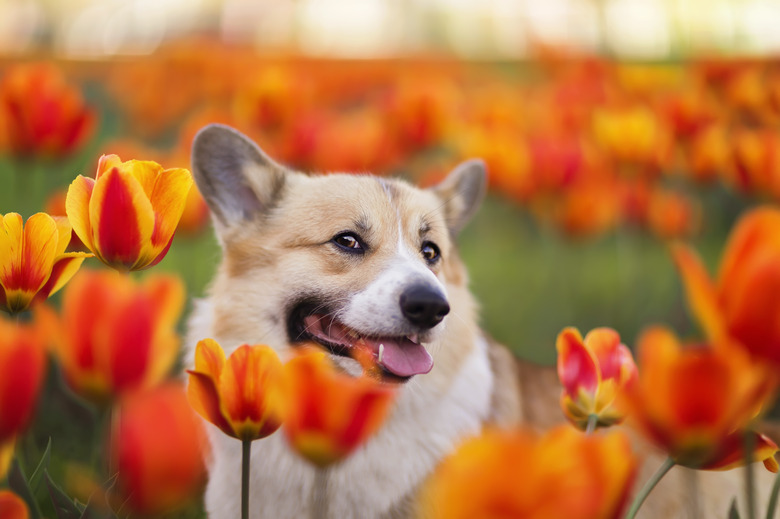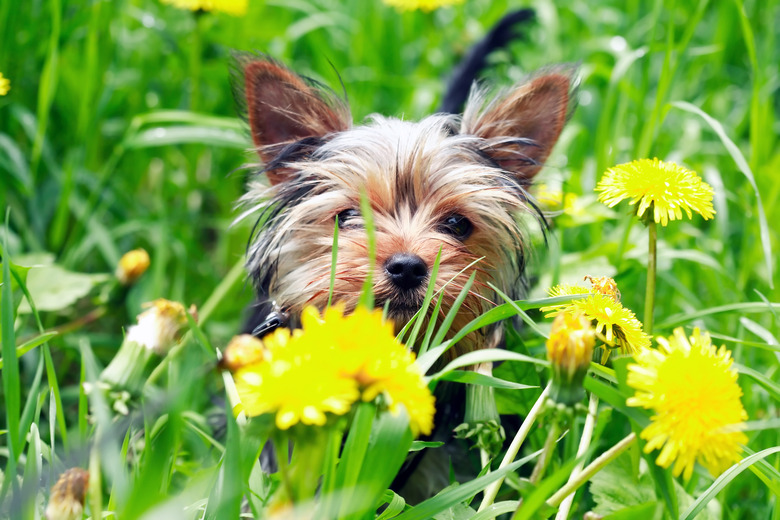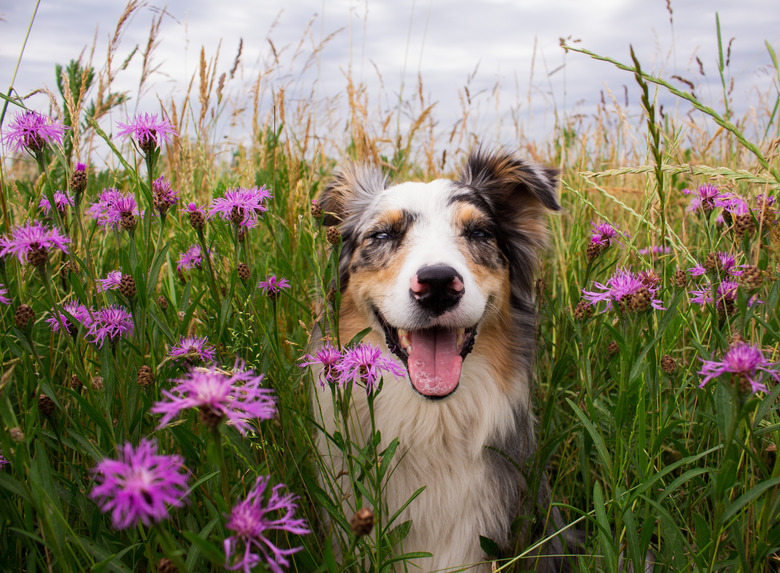Is It Dangerous For Dogs To Eat Flowers?
When the sun is shining bright and flowers are blooming, walking and playing outside with your dog is a breeze. If your dog is one for biting on blooms or eating plants, however, you may have some worries during your sprightly outdoor excursion and question whether or not your dog's spring salad is safe to eat. Should dogs eat flowers? If so, what flowers are non-toxic to dogs? If your dog has a case of spring fever and can't control their quivering nose, bounding stride, and unwavering appetite with all that this new, fresh, season has to offer, then maybe it is time to find out.
Why do dogs eat plants?
Why do dogs eat plants?
Eating the occasional piece of grass or leaf is not an uncommon occurrence among canines. According to AKC, domesticated dogs instinctively include plant material in their diets. Dogs can also use plant material like leaves and grass to make themselves vomit when they have an upset stomach. It is especially important to keep a watchful eye on your dog when they eat plants and flowers to monitor unusual behavior — and ensure they are sticking to non-toxic plants and flowers.
Are all flowers safe for dogs?
Are all flowers safe for dogs?
No, not all flowers are safe for dogs to eat. According to ASPCA, while flowers and plants may be stimulating and pleasing to your pet's senses, there are some flowers that may cause vomiting, diarrhea, and can even be toxic and deadly to your pet if ingested. It is very important to keep a watchful eye on your pet when out and about, in addition to making sure your pet is surrounded by non-toxic, dog-friendly alternatives at home!
Should dogs eat flowers?
Should dogs eat flowers?
Dogs can and will eat flowers on occasion. While dogs are omnivores, animals that consume a diet of both meat and plants, according to VCA Animal Hospitals, your pet can get much of their nutrition from dog food and other dietary choices that you will wish to discuss with your veterinarian. Dogs do not necessarily need to actively include flowers in their everyday diet, (nor should they) but a dog should be able to eat flowers in moderation if the flowers are non-toxic to dogs. Though if your pup is eating flowers, be sure to check that the flowers are non-toxic, and your dog does not have any allergies or medical conditions that would prohibit them from consuming plant material.
What flowers are harmful to dogs?
What flowers are harmful to dogs?
There are several flowers that can be harmful to dogs. According to ASPCA, some of these varieties include:
- Tulip
- Daffodil
- Azalea
- Rhododendron
- Oleander/Nerium
- Daisy
- Chrysanthemum
The symptoms can range depending on the flower and how much was consumed. Symptoms can include (but are not limited to) stomach upset, intestinal blockage, low blood pressure, irregular heartbeats, and even seizures. If your dog eats these or any other toxic variety of plants, monitor closely, and contact your nearest veterinarian immediately.
What flowers are non-toxic to dogs?
What flowers are non-toxic to dogs?
There are several flower varieties that are deemed safer and more "dog-friendly" to have in your home and garden. According to ASPCA, some of these varieties include:
- Orchid
- Gerber Daisy
- African violets
- Blue Echeveria (succulent)
- Donkey's Tail (succulent)
- Rose
- Sunflower
- Stock
- Jasmine
- Freesia
According to ASPCA, while there is a risk for mild stomach upset and other adverse reactions with these varieties, they are considered to be safer and non-toxic when ingested in moderation, versus plants that are explicitly toxic. Every pet is different, so be sure to always monitor your dog when they are around unfamiliar objects or eating new things.
In summary
In summary
Dogs do not need flowers in their daily diet, but if they happen to eat a few petals, they can, as long as the flower is non-toxic. Be sure to monitor your pet when they are eating flowers, as adverse reactions are always possible. If your pet is eating a flower that is toxic to dogs, be sure to monitor your pet and contact your veterinarian immediately — as side effects can be serious and emergent.


